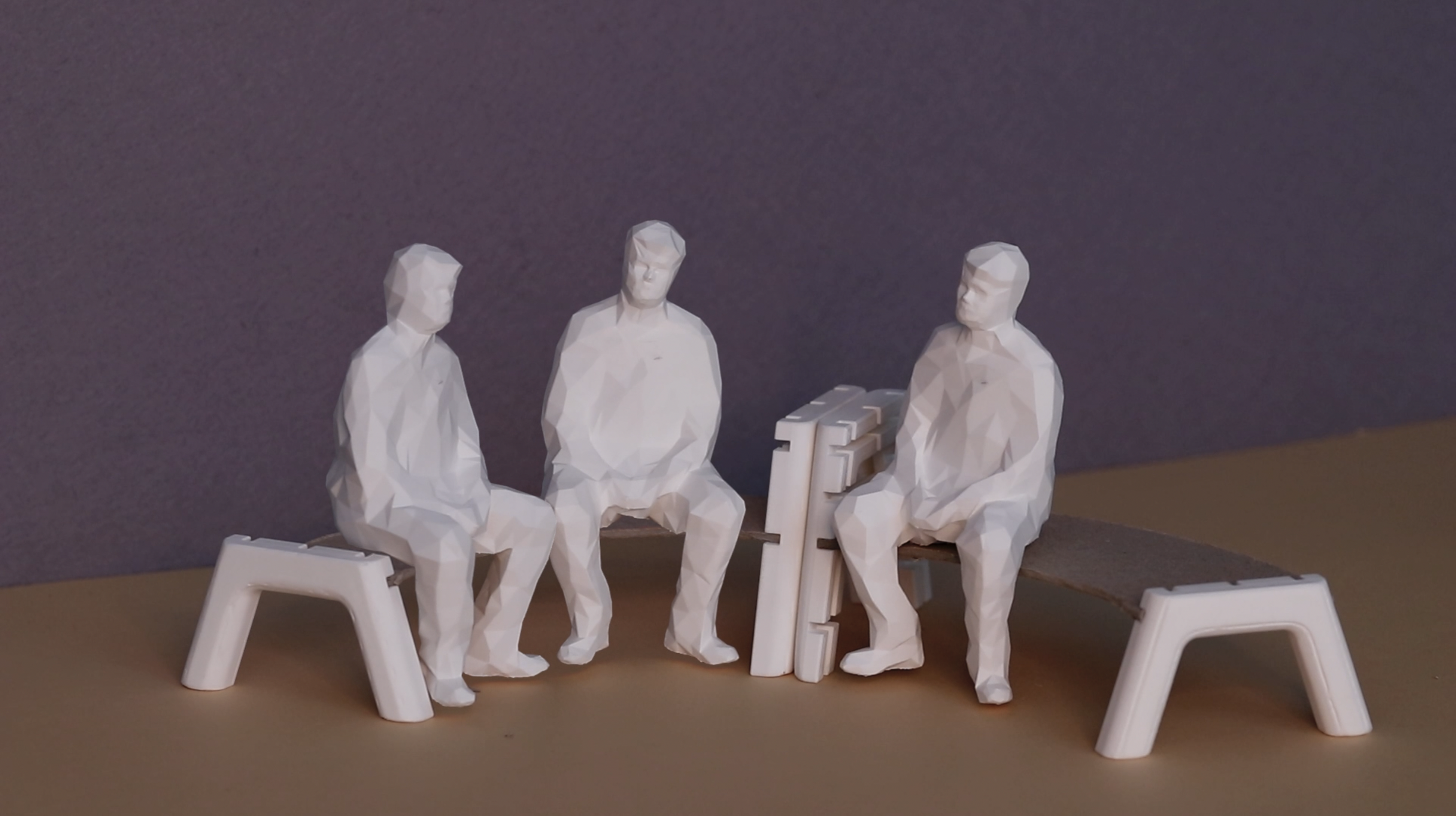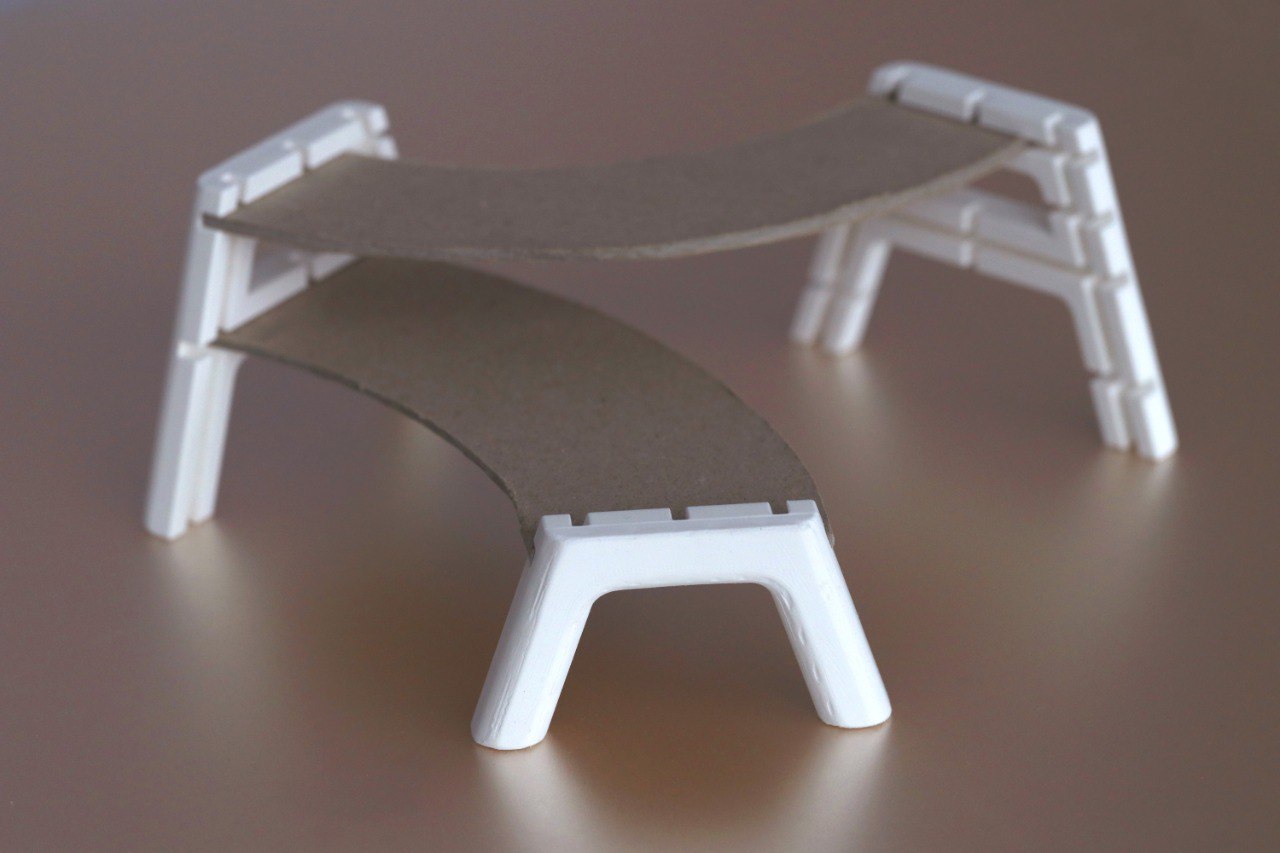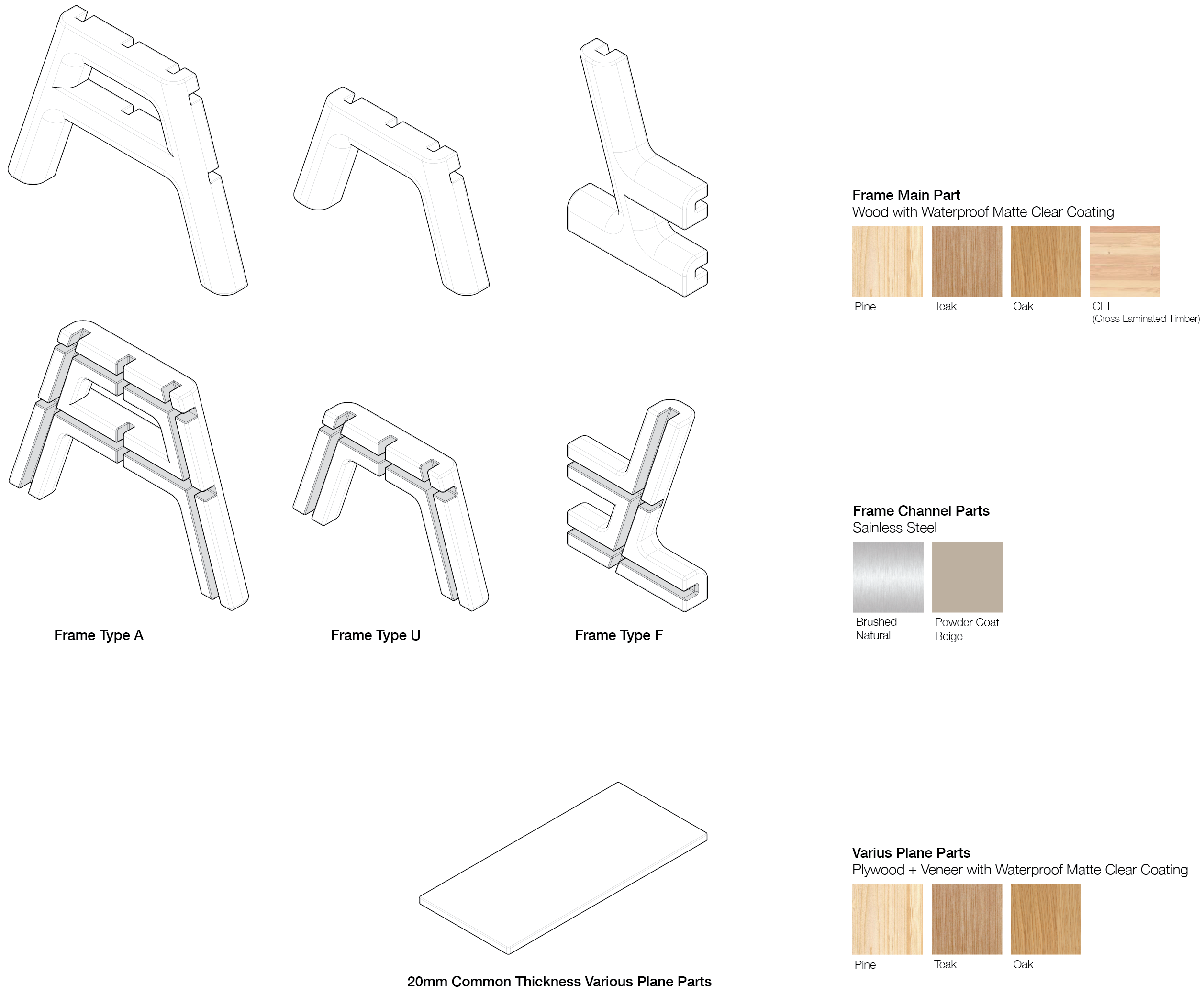A-FRAME
A modular outdoor furniture system and service path for community-building on the Aalto University Campus
PROJECT TYPE
Exchange
Team
SUPERVISED BY
Severi Uusitalo
Irina Viippola
TEAM
Vilhelmiina Skyttä
Nozomu Okada
Jef Rouschop
CONTRIBUTIONS
Generative co-design
Process management
3D-modeling & printing
THEMES
Product design
User experience design
The initial design brief given by Aalto University Campus & Real Estate (ACRE) was to
design mobile outdoor furniture for the campus to address the lack of use of these
areas. This inspired our team to look at already present solutions, temporary or
permanent. We were inspired by signs of user appropriation of the campus outdoors, such
as the Arts Wappu terrace, guild terraces, make-shift sitting areas, and the Aalto skate
park. After a tour on campus, more user research activities were necessary to understand
the context and to elicit the needs & values behind these appropriation activities.
Interviews with three master students gave us a deeper look into the stories of students
on the Aalto campus and how this related to their needs; and a participatory feedback
board was used to gather broad insights on what people think currently about the campus
outdoors, and how that could be used and improved. Based on this inspiratory user data,
our team started designing the concept. Key themes for this were modularity of the
furniture, how it aesthetically related to the campus, how users can appropriate it and
build a community around it, and what ACRE’s role in this would be. Through struggling
with the design, we discovered that the main problem we were trying to tackle was not
necessarily just how the furniture could foster community and appropriation; rather, it
was also related to conflicting execution of values and needs between students & ACRE.
This gave rise to the two fundamental dimensions of our concept: the physical
modularity, where both stakeholders are able to reconfigure the furniture according to
their wishes; and the development service path, which includes an iterative cycle of
building, feedback and revision of the furniture through collaboration between ACRE and
the students.
Going beyond the A-frame concept, the design process prompted a more thorough reflection
on what it means to design for emergent phenomena. A more metacognitive layer was
present in this process that forced deeper engagement with what our team was working on,
as well as with what we were working on: analysis of the problem space solution space.







